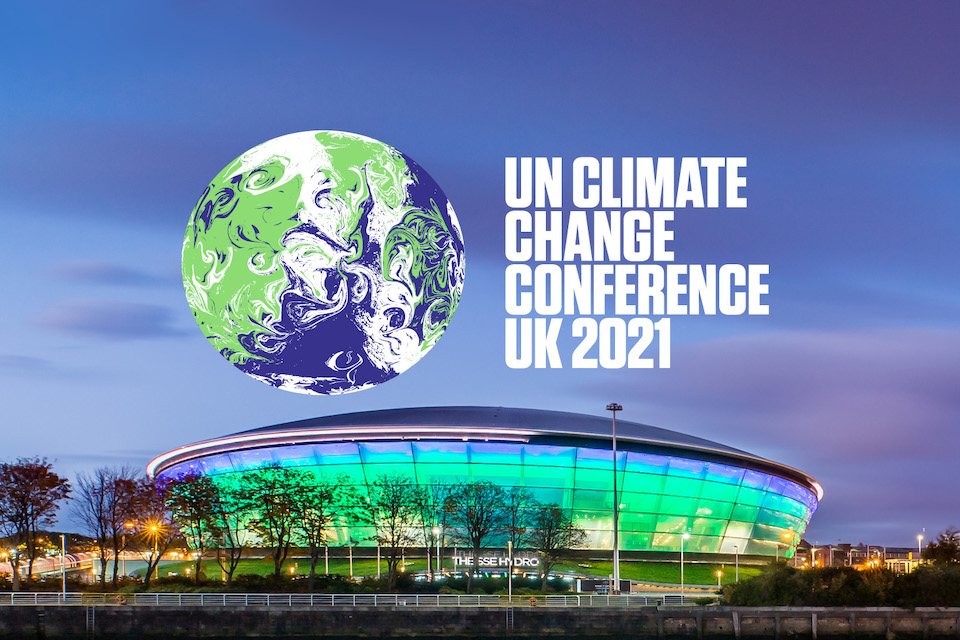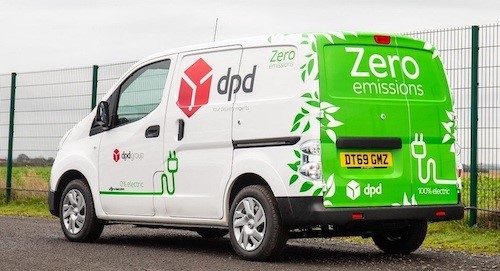
COP26: What does it all mean for construction?
Built environment emissions were often in the spotlight at the recent COP26 conference in Glasgow. Below, Neil Macdonald looks at some of the agreements that came out of COP and what it all means for businesses in and around the construction sector.
Given that the built environment and construction accounts for 38% of total global carbon emissions, it’s clear that the sector has a key role to play in meeting net zero. It’s also unsurprising that the construction and infrastructure industry was often in the spotlight at last month’s COP26 event in Glasgow, no more so than on Cities, Regions and the Built Environment Day, which took place on 11 November.
No wonder also that Roland Hunziker, director of sustainable buildings and cities at the World Business Council for Sustainable Development (WBCSD), has called built environment emissions “the sleeping giant”. It’s worth taking a look at the agreements that emerged from Built Environment Day and the rest of COP26 and what it all means for businesses in and around the construction sector.
Reducing embodied carbon
A huge part of the construction sector’s carbon footprint comes from embodied carbon – 25% of the total in the UK, according to the UK Green Building Council (UKGBC). Embodied carbon is the sum total of emissions generated across a construction project’s lifetime via construction materials used, the building process and transport and demolition and disposal at end-of-life
The WBCSD warned recently that less than 1% of building projects worldwide account for embodied carbon in full. As the projections in the newly-published UKGBC’s Net Zero Whole Life Roadmap make clear, most of the gains made to date by the construction industry have been in operational carbon – that is, the obvious running costs of buildings.
The UKGBC’s roadmap lays a heavy emphasis on reducing embodied carbon in building processes through a range of measures and actions. These include calling for whole life carbon measurement to be made mandatory in building regulations by 2025, changing planning and VAT rules to promote reuse of old buildings, urging constructors to shift to alternative building materials and introducing carbon pricing and anti-carbon leakage policies at national level from the mid-2030s.
As well as these proposals, the roadmap also offers a number of proposals on the operational side, including ending the sale of gas and oil boilers by 2030 with a timeline for phasing them out thereafter, introducing a mandatory minimum EPC “C” required at point-of-sale for owner-occupied homes and the domestic rented sector by 2027-2028, launching a mandatory domestic retrofit strategy, led by a Central Retrofit Agency and also removing VAT from energy efficiency retrofit works and tying stamp duty rates to energy efficiency.
The roadmap also includes 14 stakeholder action plans for different sectors (including developers, landlords, investors etc), explaining how they can play their part in this effort. This promises to be a major landmark in UK construction’s journey to net zero.
What should construction companies do?
Construction Leadership Council (CLC) co-chair Andy Mitchell was absolutely right when he told the CLC’s COP26 event that the sector’s efforts on decarbonisation during the pandemic period show “quite how much can change if we really want it to change”. But he was also right, as the UKGBC’s data shows, that there’s still a lot to do.
The call to examine embodied carbon just as carefully as operational carbon that came out of Glasgow could lead to some quick wins and there are a number of things that businesses should work towards.

Switching to zero-emissions vehicles and plant on-site and for transport purposes would be a good start as would adopting Modern Methods of Construction and alternatives to concrete and steel wherever possible. Firms should also reconsider the use of embodied carbon in materials used for aesthetic purposes (for example in aluminium cladding) as well as offsetting to compensate for ‘sunk’ carbon in infrastructure and buildings until replacement. It’s worth noting that the UK government has committed to planting 30,000 hectares of trees per year by 2025.
Businesses should also be planning to retrofit and reuse existing buildings rather than constructing new ones and look to minimise waste and maximise recycling and reuse of materials (eg bricks, metals, concrete) in construction activities. Better planning of transport activities, like using open vehicles where possible rather than containers (to reduce weight) and sourcing materials locally would also be another quick win in reducing embodied carbon.
There has also been much talk in the sector about the need to train workforces in net zero carbon skills to achieve a common level of ‘carbon literacy’ and also adapting supply chains to put pressure on suppliers to move to lower emissions practices.
Where does social value fit in?
Businesses that don’t keep up with the push towards net zero are likely to find themselves at a growing disadvantage and need to start taking action now. However, net zero isn’t the only goal that responsible businesses need to be pursuing. Take social value, for example. The construction sector has been working hard in recent years to promote this in its work and already, a minimum of 10% of the weight in public procurement decisions has to be given over to social value considerations.
So, are these priorities competing with one another? Not at all. One of the five themes in the government’s Social Value Model is “Fighting Climate Change” so a company’s efforts in decarbonising can actually help them to win new business. Some of the biggest and most successful construction groups are already working hard to get ahead in this space by partnering with Thrive – companies like Kier Group who we are working with to deliver a social value calculator that will capture, track and demonstrate social value across the group’s activities.
Demonstrating social value and a commitment to net zero are inextricably linked and companies should take every opportunity to leverage their positive actions in both of these areas as they show a progressive approach to people and planet that can only be good for their business and the wider industry sector in which they operate.
Neil Macdonald is chief executive of Thrive.
End.
Green Infrastructure Week curates’ content from the entire ecosystem around green infrastructure from government and NGOs to respected commentators. We are partners with Infrastructure Intelligence who has supplied this article.
Feel free to share this content with your social media community using #GreenInfrastructureWeek
During Green Infrastructure Week we will host a programme of live and exclusive free-to-attend webinars. Stay in touch with event updates by registering here.